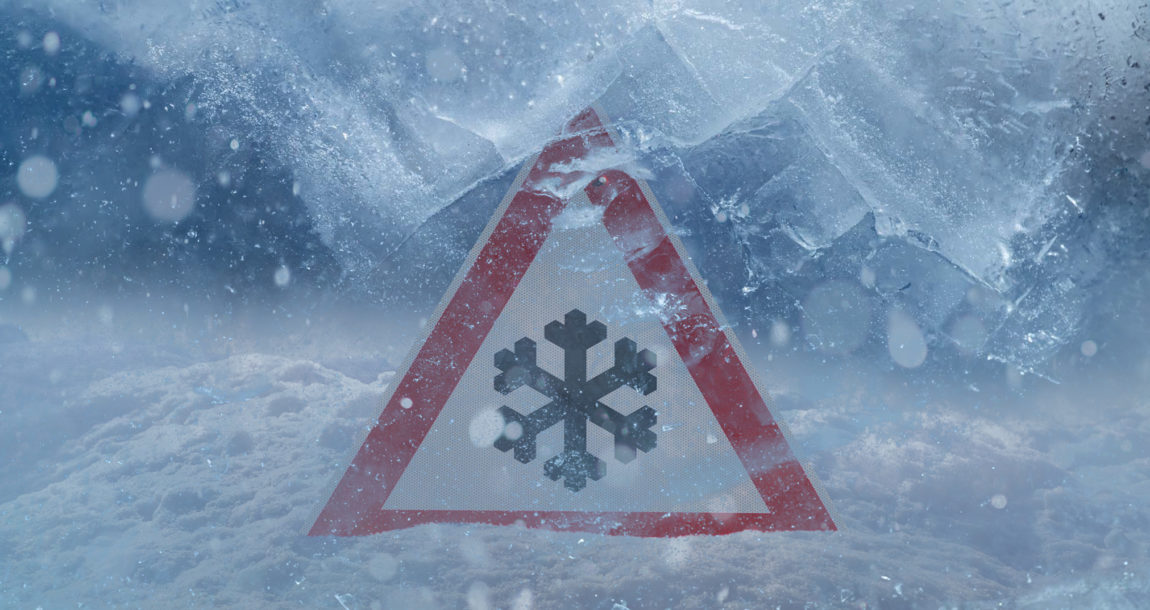Winter damage in first half of 2022 is mild, but US braces for harsher weather

Winter weather caused an estimated $64.1 million in property damages in the first half of 2022, which ranks it as a relatively mild season compared to previous years. Nevertheless, the U.S. is bracing for another destructive winter season as climate change is making winter weather worse and impacting parts of the country not traditionally associated with extreme cold – like New Mexico, Arizona, and Texas.
A review of winter weather by insurance research comparison website ValuePenguin by LendingTree, found that more than half of the $2.2 billion in winter property damage in the last nine years occurred in 2013 ($594.7 million) and 2015 ($592.5 million). That’s attributed to above-average snowfalls in 2013 and large-range cold waves in 2015.
Moreover, almost all off the damage in 2022 occurred in North Dakota, which accounted for 93.5% of the national total and there has been no property damages related to winter weather in Hawaii, the District of Columbia, and Delaware over the last 10 years.
Winter weather damage has fallen each year between 2017 and 2020, dipping to less than $6 million at its lowest point, but then rose to $342.3 million in 2021. ValuePenguin’s home insurance expert Divya Sangameshwar said many factors accounted for the rise.
“On one hand, you’ve got a large number of people moving to climate-vulnerable areas — like the coast – and a growing wealth divide," she said. "Many consumers simply can’t afford to protect their properties against disasters. On the other hand, rising inflation means insurance companies are getting hit with increasingly costly claims. And, of course, climate change is making winter weather more extreme."
The 10 states with the most damage from winter weather events in 2022 were North Dakota, New York, Vermont, Idaho, Pennsylvania, Kansas, Kentucky, Washington, Indiana, and Tennessee.
Since 2013, New Mexico has experienced the most winter weather damage, at $405.4 million in property damages. That’s followed by Texas ($396.3 million) and Arizona ($151.0 million).
Because many may associate these states with warmer weather, those rankings may come as a surprise. However, Sangameshwar says climate change is once again to blame for those winter weather damages.
"The changing jet stream can explain the surge in extreme cold in states like Texas, New Mexico and Arizona, where winters are traditionally milder — and local authorities aren’t as equipped to deal with snow and ice as states where icy weather is more common," she said.
While damage totals seem lower for 2022 so far, that could change Sangameshwar said.
“We might have significantly more winter damage by the end of this year,” she said. “Damage estimates have not started coming in for the aftermath of Winter Storm Diaz – which saw huge swaths of the country get 15-70 inches of snow, tornadoes and heavy rain.”
As far looking ahead, which the research company doesn’t normally do, Sangameshwar said it homeowners and businesses would do well to be prepared.
“We're due for a pre-Christmas snowstorm that's due to affect nearly two-thirds of the country – which could cause more damage,” she said.
Those at risk for winter weather damages, she said, typically shouldn’t worry about potentially filing an insurance claim.
"Most home insurance policies cover standard types of damages when it comes to snow, wind, rain or ice," she said. "This includes damage from falling snow, ice damage, and frozen or burst pipes. That said, not all types of winter damages are covered by homeowners insurance. For example, some homeowners insurance policies exclude cosmetic damages caused by wind and hail, so it’s important to talk to your insurer about wind or hail exclusions to see if you’re covered."
Doug Bailey is a journalist and freelance writer who lives outside of Boston. He can be reached at [email protected].
© Entire contents copyright 2022 by InsuranceNewsNet.com Inc. All rights reserved. No part of this article may be reprinted without the expressed written consent from InsuranceNewsNet.com.
Doug Bailey is a journalist and freelance writer who lives outside of Boston. He can be reached at [email protected].





How insurance brokers can ensure consent and compliance in marketing
How to have a breakthrough in 2023
Advisor News
- Global economic growth will moderate as the labor force shrinks
- Estate planning during the great wealth transfer
- Main Street families need trusted financial guidance to navigate the new Trump Accounts
- Are the holidays a good time to have a long-term care conversation?
- Gen X unsure whether they can catch up with retirement saving
More Advisor NewsAnnuity News
- Pension buy-in sales up, PRT sales down in mixed Q3, LIMRA reports
- Life insurance and annuities: Reassuring ‘tired’ clients in 2026
- Insurance Compact warns NAIC some annuity designs ‘quite complicated’
- MONTGOMERY COUNTY MAN SENTENCED TO FEDERAL PRISON FOR DEFRAUDING ELDERLY VICTIMS OF HUNDREDS OF THOUSANDS OF DOLLARS
- New York Life continues to close in on Athene; annuity sales up 50%
More Annuity NewsHealth/Employee Benefits News
Life Insurance News
- AM Best Affirms Credit Ratings of Manulife Financial Corporation and Its Subsidiaries
- AM Best Upgrades Credit Ratings of Starr International Insurance (Thailand) Public Company Limited
- PROMOTING INNOVATION WHILE GUARDING AGAINST FINANCIAL STABILITY RISKS SPEECH BY RANDY KROSZNER
- Life insurance and annuities: Reassuring ‘tired’ clients in 2026
- Reliance Standard Life Insurance Company Trademark Application for “RELIANCEMATRIX” Filed: Reliance Standard Life Insurance Company
More Life Insurance News